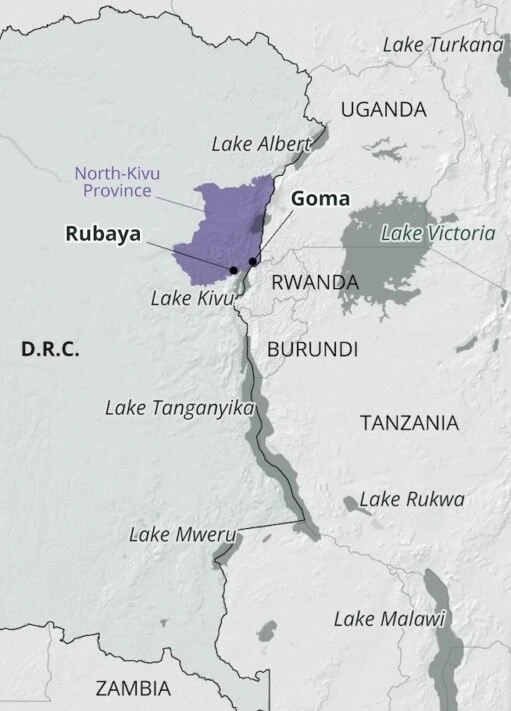Burundi’s a little patch in East Africa, wedged between Rwanda, Tanzania, and the Congo, with Lake Tanganyika on one side. It’s not some big deal on world maps—most people outside don’t even know it’s there. But for the 14 million folks living it, Burundi’s story isn’t about fancy lines or dots. It’s in the ground they walk, the work they do, and the rough times they’ve pushed through. This is about what keeps Burundi ticking, the real stuff that’s in every step they take, even if the world doesn’t care to look.
The Land They Depend On
Burundi’s got some wild terrain that doesn’t get talked about much. Think steep hills, open valleys, and a big mountain called Heha that hits over 9,000 feet smack in the middle. Lake Tanganyika stretches along the southwest, deep and old, where fishermen scrape by. The Ruvyironza River starts here, a small stream that flows into the Nile, connecting Burundi to something huge. This land’s not just scenery—it’s where people live and work. Over 80% of them are farmers, growing coffee, tea, beans, or cassava on tiny plots of volcanic soil. Trouble is, the land’s taking a beating—erosion’s eating it up, and too many cows graze it down. With so many people crammed in, there’s not enough room to grow what they need.
Every day, families are out there with hoes, planting and digging, hoping the rain shows up. Kids tag along, learning the ropes young. It’s hard, sweaty work, but it’s how they eat. You won’t find that on a map, but every step on those fields is about keeping their families alive and holding onto what they’ve got.

The People Who Stick Together
Burundi’s got three main groups—Hutu, Tutsi, and Twa—but they’re not as split as you might think. They all talk Kirundi, one language that keeps them linked, not like other places where a dozen tongues cause fights. Back then, being Hutu or Tutsi wasn’t just about who your parents were—it was about what you owned. A Hutu with a herd of cows could be called Tutsi; a Tutsi who lost everything might be called Hutu. It was more about money or where you lived. Then the Germans and Belgians came, picked sides, and turned it into a tribal mess that still haunts them.
Still, people here are tight—neighbors, family, buddies. You hear Kirundi shouted in Bujumbura’s markets or mumbled in Gitega’s streets. That shared talk holds them together, even when things get ugly. It’s not on any map, but it’s in every step they take, every chat they have, every kid they raise.
The Kingdom That Held On
Burundi didn’t start as some colonial scribble. It was a kingdom way back in the 1500s, run by a king called the mwami and his gang of princes, the ganwa. The mwami owned the land, and farmers gave him crops or labor for safety. It wasn’t a picnic, but it was theirs. A king named Ntare IV, from 1796 to 1850, doubled the kingdom’s size, making it strong. When the Germans rolled in during 1899, then the Belgians in 1916, they didn’t get it. They boosted the Tutsi big shots, tightened the tribal lines, and brought diseases that killed people off. But King Mwezi IV Gisabo didn’t just give up—he fought the Germans, keeping the kingdom’s guts alive.
That fight’s still in the people today. It’s not in some history book or on a map—it’s in how they stand tall, step by step, knowing their past didn’t break them.
The Hard Times Nobody Notices
Burundi’s had its share of hell since it broke away from Belgium in 1962, and the world barely blinked. Fights between Hutu and Tutsi, stirred up by colonial meddling, kicked off bad. In 1972, a Hutu uprising got smashed, and the Tutsi army killed 80,000 to 210,000 people, mostly Hutus. Nobody cared much outside. Then the 1993-2005 civil war hit harder, taking about 300,000 lives, Hutu and Tutsi, as old grudges turned bloody. Families ran to Rwanda or Tanzania, or stayed to rebuild what was left.
Things flared up again in 2015 when President Pierre Nkurunziza went for a third term. Protests started, a coup flopped, and violence spiked. Over 400,000 people took off, and the government’s youth group, Imbonerakure, got known for scaring anyone who spoke up. Even after Nkurunziza died in 2020, the new guy, Évariste Ndayishimiye, hasn’t fixed it all. But Burundians keep going—burying their dead, raising kids, and holding on. That toughness isn’t on any map—it’s in every step they take.
The Daily Grind to Stay Alive
Burundi’s one of the poorest spots around—80% of people live on almost nothing. Most are farmers, growing coffee and tea that bring in nearly all the country’s cash from exports. But when prices drop or the weather tanks, families go hungry. Over half the kids under five don’t get enough to eat, stuck with cassava or maize that’s cheap but weak on nutrients. Life expectancy’s short, around 67 years, and too many babies don’t make it. Still, people get up, hit the fields, or hustle in markets to keep going.
Bujumbura’s got a little buzz—some bars, a few food spots—but most folks are just trying to survive the day. Free school since 2005 helps kids, but parents still scrape by to keep them learning. Every step to the market, every crop they plant, is a fight to stay afloat. You won’t see that on a map, but it’s what keeps Burundi standing.
What It’s All About
Burundi’s story isn’t splashed on world maps or news feeds. It’s in the farmers digging in chewed-up soil, the families talking Kirundi, the kids heading to school through it all. The Hutu, Tutsi, and Twa aren’t just names—they’re people who’ve faced wars, hunger, and loss but keep walking. Their steps, from Gitega’s hills to Lake Tanganyika’s shore, carry a story of grit and survival that no map could ever show.
This isn’t some happy wrap-up. Burundi’s got poverty, politics, and a past that won’t let go. But every step its people take, every field they work, every day they push through, is part of a story that’s raw and real. Forget the map—Burundi’s in the dirt, the sweat, and the will to keep going.

